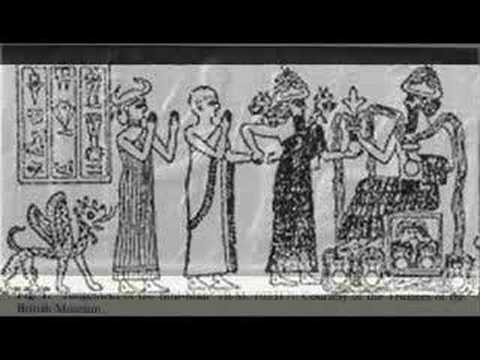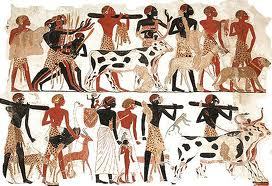The history and culture of the Mesopotamian civilization is inextricably connected to the ebb and flow of the Tigris and Euphrates Rivers. The earliest communities developed to the north but since rainfall in that area was so unpredictable, by 5000 B.C. communities had spread south to the rich alluvial plain.

In addition to the civilization of Mesopotamia the economy of these communities was primarily agricultural and approximately 100-200 people lived in these permanently established villages. The alluvial plain in southern Mesopotamia was far more fertile than the north but because there was little rainfall, irrigation ditches had to be constructed.
Civilization emerged in Mesopotamia because the soil provided a surplus of food. With this surplus, people could settle down to village life and with these new settlements, towns and cities began to make their appearance, a process known as urbanization. With settlements and a surplus of food came an increase in the population, a well-defined division of labor, organization, cooperation and kingship. 
The emergence of cities involved interaction between people. Most cities evolved from smaller farming villages and with the practice of irrigation, which was necessary for villages distant from the Tigris and Euphrates, a stable food supply was produced. This, in turn, allowed increases in the number of people who inhabited each settlement in the Mesopotamian civilization.
Because the land closest to the river was the most fertile, there was a variation in terms of the wealth of these early farmers, which led to distinct social classes. At the same time, the construction of canals, ditches and dikes essential to irrigation demanded cooperation between different social groups.

Decision-making, regulation and control of all food production and herding meant cooperation. And because more food could be produced by less people, some people gave up farming and became craftsmen, laborers, merchants and officials and this too required cooperation.
The Mesopotamians built massive temples or ziggurats which housed the priestly class, the human representatives of the gods. The priests controlled the religious life of the community, the economy, land ownership, the employment of workers as well as the management of long distance trade.
In the Mesopotamian civilization villages and towns eventually evolved into independent and nearly self-sufficient city-states. Although largely economically dependent on one another, these city-states were independent political entities and retained very strong isolationist tendencies. This isolationism hindered the unification of the Mesopotamian city-states, which eventually grew to twelve in number.
The achievements of Mesopotamian civilization were numerous. Be it in Agriculture, all credit to the construction of irrigation ditches, which became the primary method of subsistence, be it Farming which was simplified by the introduction of the plow, or be it craft specialization and industries that began to emerge (ceramic pottery, metallurgy and textiles).
Moving on to the other advancements like the invention of writing (cuneiform) which helped maintain records, the Hammurabi code of law which contributed in maintaining justice etc all these activities added on one by one, bit by bit to what the world is today.